About the Department
Although the quest for education excellence has characterized our Department since its beginning, our thrust into national prominence as a major source of chemistry and biochemistry graduates has taken place during the last four decades.
In 1997, our 27 American Chemical Society-certified BS/CHEM graduates placed us in the top 25 of all American colleges and universities giving this degree for the 21st year in a row. However, the burgeoning popularity of our BS/BIOC program, introduced in 1989, eroded that position in subsequent years – still high, but not top 25.
Our standing in the ACS-certified degree derby changed – dramatically – in 2003, when our BS/BIOC degree was certified by the ACS:
|
Year
|
Total Certified UG Degrees
|
Certified UG Degrees by Major
|
National Ranking
|
|
2009
|
41
|
BS/CHEM (11) + BS/BIOC (30)
|
|
|
2008
|
42
|
BS/CHEM (17)+ BS/BIOC (25)
|
|
|
2007
|
44
|
BS/CHEM (16) +
BS/BIOC (28)
|
(8/642)
|
|
2006
|
54
|
BS/CHEM (25)
+BS/BIOC (29)
|
(9/640)
|
|
2005
|
39
|
BS/CHEM (18) +
BS/BIOC (21)
|
(10/634)
|
|
2004
|
34
|
BS/CHEM (18) +
BS/BIOC (16)
|
(13/631)
|
|
2003
|
37
|
BS/CHEM (13) +
BS/BIOC (24)
|
(10/630)
|
The aforementioned growth spurt in our BS/BIOC program has propelled us into a consistent trend of preeminence in TOTAL bachelor’s degrees (BS/CHEM + BS/BIOC + BA/CHEM + BA/CHEM ED) awarded by our Department (top 25 in 6 out of the past 13 years):
|
Year
|
Total UG Degrees
|
National Ranking
|
|
2009
|
54
|
|
|
2008
|
50
|
|
|
2007
|
55
|
(31/642)
|
|
2006
|
62
|
(26/640)
|
|
2005
|
47
|
(32/634)
|
|
2004
|
44
|
(34/631)
|
|
2003
|
48
|
(26/630)
|
|
2002
|
38
|
(44/623)
|
|
2001
|
54
|
(23/619)
|
|
2000
|
43
|
(37/613)
|
|
1999
|
56
|
(21/614)
|
|
1998
|
56
|
(25/614)
|
|
1997
|
67
|
(15/614)
|
|
1996
|
61
|
(23/616)
|
|
1995
|
53
|
(20/614)
|
[The ACS has not yet reported the graduation data for
2008 and 2009.]
We have produced a total of 1470 baccalaureate degrees in chemistry (B.S. in Chemistry, B.S. in Biochemistry, B.A. in Chemistry, B.A. in Chemistry Education) during the period 1982 through 2009. In 2009, we awarded a total of 54 undergraduate degrees in the foregoing categories. Of these graduates, 54% entered graduate or professional school immediately following graduation to pursue advanced degrees in chemistry or chemistry-related disciplines (see list at the end of this brochure). Fully one-third of the 2093 baccalaureate degrees in chemistry awarded by the U of D since 1959 have been earned by women (women account for 50% of our 304 current chemistry/biochemistry majors).
Our Department, along with the Chemical Engineering Department, attracts and graduates extremely capable students, especially in our Honors Program. This is exemplified, at the input end of the educational pipeline, by the extraordinarily high performance level of CHEM-112 chemistry, biochemistry, and chemical engineering majors on their American Chemical Society standardized final examinations:
|
Year
|
No. of CHEM-112 Students
|
ACS General Chemistry Exam
Average National Percentile Performance
|
|
|
Regular
|
Honors
|
Total
|
Regular
|
Honors
|
Total
|
|
1970
|
141
|
--
|
--
|
94th
|
--
|
--
|
|
1972
|
83
|
--
|
--
|
96th
|
--
|
--
|
|
1975
|
98
|
--
|
--
|
87th
|
--
|
--
|
|
1977
|
122
|
--
|
--
|
84th
|
--
|
--
|
|
1985
|
90
|
--
|
-
|
81st
|
--
|
--
|
|
1986
|
80
|
31
|
111
|
80th
|
98th
|
86th
|
|
1987
|
83
|
23
|
106
|
74th
|
98th
|
81st
|
|
1988
|
81
|
17
|
98
|
84th
|
94th
|
85th
|
|
1989
|
78
|
32
|
110
|
84th
|
96th
|
89th
|
|
1990
|
56
|
40
|
96
|
85th
|
95th
|
90th
|
|
1991
|
69
|
42
|
111
|
77th
|
94th
|
86th
|
|
1992
|
55
|
45
|
100
|
83rd
|
96th
|
90th
|
|
1993
|
54
|
63
|
117
|
75th
|
95th
|
89th
|
|
1994
|
76
|
62
|
138
|
72nd
|
95th
|
86th
|
|
1995
|
68
|
49
|
117
|
81st
|
98th
|
90th
|
|
1996
|
63
|
60
|
123
|
76th
|
96th
|
88th
|
|
1997
|
59
|
49
|
108
|
72nd
|
95th
|
84th
|
|
1998
|
82
|
57
|
139
|
70th
|
94th
|
82nd
|
|
1999
|
67
|
42
|
109
|
63rd
|
89th
|
73rd
|
|
2000
|
71
|
56
|
127
|
73rd
|
95th
|
87th
|
|
2001
|
61
|
41
|
102
|
76th
|
97th
|
86th
|
|
2002
|
57
|
38
|
95
|
70th
|
94th
|
81st
|
|
2003
|
67
|
53
|
120
|
83rd
|
Not used
|
NA
|
|
2004
|
72
|
58
|
130
|
69th
|
Not used
|
NA
|
|
2005
|
80
|
41
|
121
|
76th
|
Not used
|
NA
|
|
2006
|
79
|
46
|
125
|
79th
|
Not used
|
NA
|
|
2007
|
67
|
29
|
96
|
82nd
|
Not used
|
NA
|
|
2008
|
81
|
37
|
118
|
72nd
|
Not used
|
NA
|
|
2009
|
87
|
45
|
132
|
79th
|
Not used
|
NA
|
During the 1998 fall semester, as part of a survey of general chemistry teaching practices at 43 Research I institutions, we received 20 responses, counting our own. The most telling statistic produced by this survey is the average size of a general chemistry lecture section at the reporting schools. If, as is the case in our Department, good pedagogy (as opposed to simple efficiency) is the goal, we measure up rather well: smallest average lecture section size. Overall, the schools lined up as follows (total 98F general chemistry enrollment/number of lecture sections/average section size):
|
Delaware (1524/18/85)
|
Texas A&M (3000/15/200)
|
Southern Calif. (1200/4/300)
|
|
Massachusetts (1350/9/150)
|
Penn State (1800/8/225)
|
UC-Irvine (1600/5/320)
|
|
Utah (600/4/150)
|
Case Western (700/3/233)
|
Illinois (3200/8/400)
|
|
VPI (2550/15/170)
|
Duke (750/3/250)
|
UC-Berkeley (1300/3/433)
|
|
Kansas State (1639/9/182)
|
Purdue (4000/15/267)
|
SUNY-Sto ney Brook
|
|
Ohio State (3500/18/194)
|
Rochester (560/2/280)
|
(1400/3/467)
|
|
Northwestern (800/4/200)
|
SUNY-Buffalo (1150/4/288)
|
Kansas (1050/2/525)
|
The data shown for Kansas are a bit misleading, since they have one small Honors section and one gigantic (ca 1000!) regular section – the ultimate in efficiency. Even if our 8 Honors sections (4 in CHEM-103, 4 in CHEM-111, each with a maximum enrollment of 25) were folded into the remaining regular sections, our average lecture section size (150) would still be the smallest, albeit tied with UMass and Utah.
At the output end, three additional objective measures of excellence support the above claims. Eight times in the past twenty years, one of our graduating seniors received the ultimate undergraduate scientific accolade – a National Science Foundation graduate fellowship. A member of the CHEM/BIOC class of 2008 received a national Goldwater Fellowship, our fourth in three years. Three of our student participants received awards for their research presentations at the 2009 Intercollegiate Student Chemists Convention, which was held at Franklin & Marshall College (see list of awardees at awards). Most impressive of all is the fact that more baccalaureate degree recipients from our Department have gone to earn Ph.D. degrees in chemistry during the last reporting decade than the graduates of all but 20 of the 1052 colleges and universities in the U.S. (see following table).
Chemistry
Total Number of Doctorate Recipients by Baccalaureate Institution (Total n = 1052 schools)
|
|
Academic Institution
|
Sum 93-02
|
|
|
Total of All Academic Institutions
|
21,092
|
|
|
Foreign Intuitions
|
7,019
|
|
|
Unknown Institutions
|
1,590
|
|
1
|
University of California-Berkeley
|
188
|
|
2
|
University of Illinois at Urbana – Champaign
|
133
|
|
3
|
University of Michigan at Ann Arbor
|
111
|
|
4
|
Massachusetts Institute of Technology
|
108
|
|
5
|
University of Wisconsin – Madison
|
108
|
|
6
|
College of William and Mary
|
103
|
|
7
|
Pennsylvania State University, Main Campus
|
100
|
|
8
|
University of California – Davis
|
99
|
|
9
|
Cornell University, All Campuses
|
88
|
|
10
|
Purdue University, Main Campus
|
88
|
|
11
|
University of California – San Diego
|
86
|
|
12
|
University of Texas at Austin
|
86
|
|
13
|
University of North Carolina at Chapel Hill
|
85
|
|
14
|
University of Florida
|
83
|
|
15
|
Harvard University
|
82
|
|
16
|
Virginia Polytechnic Institute and State University
|
79
|
|
17
|
University of California – Los Angeles
|
76
|
|
18
|
Harvey Mudd College
|
74
|
|
19
|
University of Minnesota – Twin Cities
|
73
|
|
20
|
SUNY at Buffalo
|
71
|
|
21
|
University of Delaware
|
70
|
|
22
|
Rutgers the State University of NJ New Brunswick
|
70
|
|
23
|
University of Chicago
|
67
|
|
24
|
Carleton College
|
65
|
|
25
|
Illinois State University
|
65
|
|
26
|
University of PR Rio Piedras Campus
|
65
|
|
27
|
University of Pittsburgh Main Campus
|
64
|
|
28
|
University of California – Irvine
|
62
|
|
29
|
Michigan State University
|
61
|
|
30
|
University of Washington – Seattle
|
61
|
|
31
|
North Carolina State University at Raleigh
|
60
|
|
32
|
Texas A&M University Main Campus
|
60
|
|
33
|
Brigham Young University, Main Campus
|
58
|
|
34
|
Indiana University at Bloomington
|
58
|
|
35
|
Ohio State University, Main Campus
|
54
|
|
36
|
University of Massachusetts at Amherst
|
54
|
|
37
|
Furman University
|
49
|
|
38
|
University of California – Santa Cruz
|
49
|
|
39
|
Northwestern University
|
48
|
|
40
|
St. Olaf College
|
47
|
|
41
|
University of Virginia, Main Campus
|
47
|
|
42
|
College of Wooster
|
46
|
|
43
|
Rice University
|
46
|
|
44
|
University of Colorado at Boulder
|
44
|
Undergraduate research is a very important part of our curriculum. Up to thirty full-time research scholarships are available for our majors during the summer preceding their junior year. Ours is the only department that offers a Ph.D. in chemistry that has consistently participated in the annual Intercollegiate Student Chemists Convention, first held in 1936. Unfortunately, records for ISCC awards prior to 1949 have been lost. Since that time, undergraduate students from 62 schools in the Middle Atlantic region have received awards for their research presentations (see following Table). Students from the U of D have received the largest number of awards during that time (94). Significantly, the closest doctoral-awarding school in the list (Temple) has only produced 14 awardees.
 Undergraduate research is a very important part of our curriculum. Up to thirty full-time research scholarships are available for our majors during the summer preceding their junior year. Ours is the only department that offers a Ph.D. in chemistry that has consistently participated in the annual Intercollegiate Student Chemists Convention, first held in 1936. Unfortunately, records for ISCC awards prior to 1949 have been lost. Since that time, undergraduate students from 62 schools in the Middle Atlantic region have received awards for their research presentations (see following Table). Students from the U of D have received the largest number of awards during that time (91). Significantly, the closest doctoral-awarding school in the list (Temple) has only produced 14 awardees. Undergraduate research is a very important part of our curriculum. Up to thirty full-time research scholarships are available for our majors during the summer preceding their junior year. Ours is the only department that offers a Ph.D. in chemistry that has consistently participated in the annual Intercollegiate Student Chemists Convention, first held in 1936. Unfortunately, records for ISCC awards prior to 1949 have been lost. Since that time, undergraduate students from 62 schools in the Middle Atlantic region have received awards for their research presentations (see following Table). Students from the U of D have received the largest number of awards during that time (91). Significantly, the closest doctoral-awarding school in the list (Temple) has only produced 14 awardees.
The prognosis for the immediate future looks even brighter. In the scant nineteen years of its existence, our ACS-certified B.S. in Biochemistry program has increased in popularity to the point that it accounts for more majors than our long-standing ACS-certified B.S. in Chemistry program. We received Faculty Senate approval in 1995 for our fifth undergraduate degree program – a B.S. in Chemistry with Environmental Concentration – thereby beating, once again, the ACS Committee on Professional Training to the punch (we had our program in place before they approved the guidelines for it). Indeed, ours was the first program of its type in the country to be certified by the ACS. In the same vein, our inorganic chemistry and biochemistry course requirements for our BS/CHEM majors predated those currently mandated by the ACS/CPT by 15 and 20 years, respectively. 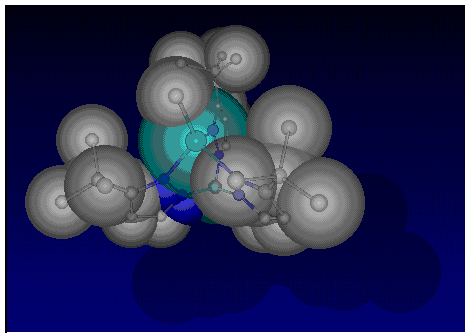
Our Department has recently been awarded seven major grants which have significantly benefited our undergraduate program. Four>$1MM grants from the Howard Hughes Medical Institute enabled us to develop a model program, NUCLEUS, to attract and integrate minority undergraduates in the study of chemistry and biochemistry, introduce a new biochemistry laboratory course, and establish scholarships providing fully funded laboratory research experiences for majors in their junior and senior years. A recent $200K grant from the UNIDEL Foundation will enable us to significantly improve our upper division laboratory equipment. Professor 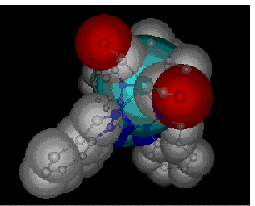 Kate Scantlebury, the U of D’s Coordinator of Secondary Science Education, is the PI for a $500K NSF grant for the preparation of gender-sensitive secondary science teachers. Professor Harold White is the PI for a $240K NSF grant to develop models for implementing the Problem Based Learning approach, bringing the real world into science classrooms. Professor Susan Groh is also an investigator involved in this study. Most recently, we, together with the U of D’s Department of Biological Sciences, became one of only 10 programs nationwide selected to be participants in the prestigious Beckman Scholars Program, which supports undergraduate research. Kate Scantlebury, the U of D’s Coordinator of Secondary Science Education, is the PI for a $500K NSF grant for the preparation of gender-sensitive secondary science teachers. Professor Harold White is the PI for a $240K NSF grant to develop models for implementing the Problem Based Learning approach, bringing the real world into science classrooms. Professor Susan Groh is also an investigator involved in this study. Most recently, we, together with the U of D’s Department of Biological Sciences, became one of only 10 programs nationwide selected to be participants in the prestigious Beckman Scholars Program, which supports undergraduate research.
Award Winners at Intercollegiate Student Chemists
Conventions (1949-2009)
[Records for 1936-1948 have been lost.]
|
|
No. of
|
|
|
No. of
|
|
School
|
Awards
|
|
School
|
Awards
|
|
|
|
|
|
|
|
DELAWARE*
|
94
|
|
Douglass
|
2
|
|
Ursinus
|
70
|
|
Drexel*
|
2
|
|
Franklin and Marshall
|
68
|
|
LaSalle
|
2
|
|
Lebanon Valley
|
41
|
|
Morgan State
|
2
|
|
Muhlenberg
|
37
|
|
Allentown
|
1
|
|
Gettysburg
|
22
|
|
Beaver/Arcadia
|
1
|
|
Juniata
|
19
|
|
Cedar Crest
|
1
|
|
Bucknell
|
17
|
|
Chestnut Hill
|
1
|
|
Indiana U of PA
|
17
|
|
Drew
|
1
|
|
Villanova
|
16
|
|
Frostburg
|
1
|
|
Temple*
|
14
|
|
Geneva
|
1
|
|
Georgetown*
|
10
|
|
Goucher
|
1
|
|
Bloomsburg
|
9
|
|
Johns Hopkins*
|
1
|
|
Elizabethtown
|
10
|
|
Kutztown
|
1
|
|
Lehigh*
|
8
|
|
Lincoln
|
1
|
|
Moravian
|
8
|
|
Millersville
|
1
|
|
Swarthmore
|
7
|
|
NJIT
|
1
|
|
Salisbury
|
6
|
|
Penn*
|
1
|
|
West Chester
|
6
|
|
Rider
|
1
|
|
Hood
|
5
|
|
Rowan
|
1
|
|
Maryland, College Park*
|
5
|
|
Seton Hall*
|
1
|
|
Bryn Mawr*
|
4
|
|
St. Joseph's
|
1
|
|
Rutgers*
|
4
|
|
St. Mary's
|
1
|
|
Shippensburg
|
4
|
|
Susquehanna
|
1
|
|
Albright
|
4
|
|
Trinity (CT)
|
1
|
|
Allegheny
|
3
|
|
Upsala
|
1
|
|
Haverford
|
3
|
|
VCU*
|
1
|
|
Kings
|
3
|
|
W&J
|
1
|
|
Lycoming
|
3
|
|
Westminster
|
1
|
|
Naval Academy
|
3
|
|
Widener
|
1
|
|
Wilkes
|
3
|
|
Wright State*
|
1
|
It is instructive to compare our record with those of the other Ph.D.-granting schools on the list (marked*).
In addition, a computer room and office space for BIOC majors’ study activities was outfitted in Drake Laboratory using funds from the HHMI Grant. It has 4 Macintosh computers and a network of 3 silicon Graphics workstations. HHMI funds are also used to support the research efforts of BIOC undergraduates during the Winter and Summer Sessions.
The legacy of Professor Theodore Wolf, the first U of D chemistry professor, has produced a chemistry/biochemistry faculty whose members have received seven Lindback Foundation/ Delaware Alumni Association Excellence-in-Teaching Awards (William Mosher, 1964; John Burmeister, 1968, 1979; Elizabeth Dyer, 1969; Burnaby Munson, 1973: Carl von Frankenberg, 1978; Henry Blount, 1981) and two national Chemical Manufacturers Association Catalyst Awards (Elizabeth Dyer, 1958; John Burmeister, 1981.) Widely adopted teaching texts have been written by Professors James Moore (“Organic Chemistry: An Overview, co-authorized with T. J. Barton”, 1978; “Experimental Methods in Organic Chemistry”, 3rd edition co-authored with D. L. Dalrymple and O. R. Rodig, 1982), Joseph Noggle (“Physical Chemistry”, 3rd ed., 1996), and Douglass Taber (“Organic Chemistry Laboratory: Standard and Microscale Experiments”, 3rd edition, co-authored with C. E. Bell and A. K. Clark, 2001). In 1993, Professor Burmeister was named the University’s second Alumni Distinguished Professor, “in recognition of his excellence in teaching and extraordinary commitment to students.” In 1994, he was chosen as the State of Delaware’s Professor of the Year by the Carnegie Foundation for the Advancement of Teaching and the Council for the Advancement and Support of Education. In 1997, Victoria Orner received one of the University awards for Excellence in the Undergraduate Academic Advising. Professor Susan Groh also received this Award in 1999, as well as two Alpha Lambda Delta Excellence-in-Teaching Awards (1994, 2000) and a College of Arts and Sciences’ Outstanding Advising Award in 2008. Professor Burnaby Munson received the AΛΔ Award in 2001, and in 2002, received the U of D’s Medal of Distinction – the highest award given by the University. Professor Harold White has received both the College of Arts and Sciences’ Outstanding Teaching (2005) and Outstanding Service (2007) Awards.
The legacy is still in good hands!


Research Facilities
Facilities
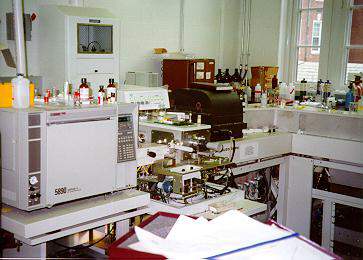 The Chemistry and Biochemistry Department occupies the H. Fletcher Brown, Quaesita Drake, and Lammot Du Pont Chemical Laboratories, the latter having been completed, at a cost of $23M, in 1993. The south wing of Brown Laboratory was completely renovated in 1994-95. These connected laboratory buildings provide over 212,000 sq. ft. of teaching, research and office space and are fully equipped to meet the research needs of students and faculty. They contain a centrally located chemistry stockroom and electronic, machine, and glass-blowing shops that are staffed by full-time specialists. Complete renovation of the north and west wings of Brown Laboratory was completed in 2005-2007. The Chemistry and Biochemistry Department occupies the H. Fletcher Brown, Quaesita Drake, and Lammot Du Pont Chemical Laboratories, the latter having been completed, at a cost of $23M, in 1993. The south wing of Brown Laboratory was completely renovated in 1994-95. These connected laboratory buildings provide over 212,000 sq. ft. of teaching, research and office space and are fully equipped to meet the research needs of students and faculty. They contain a centrally located chemistry stockroom and electronic, machine, and glass-blowing shops that are staffed by full-time specialists. Complete renovation of the north and west wings of Brown Laboratory was completed in 2005-2007.
Research Instruments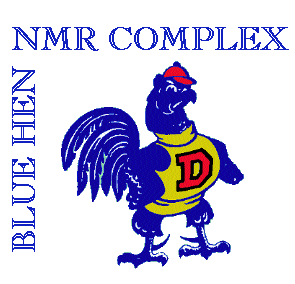
The Department is well equipped to carry out modern chemical research in its three laboratories. The “Blue Hen NMR Complex” has eight super-conducting NMR spectrometers including Bruker DRX 400 MHz, ADVANCE 600 MHz spectrometers, and two solid-state spectrometers. The ADVANCE 600 MHz spectrometer is equipped with an inverse triple-resonance probe and a CryoProbeTM. The departmental mass spectrometry facility serves as a campus wide resource. The facility includes a user laboratory with three benchtop instruments for walk-up use – Bruker Omniflex MALDI, and Agilent GC-MS and a Finnigan LCO for LC-MS-and an advanced laboratory containing Finnigan T30 and Bruker Apex Fourier Transform mass spectrometers, a Micromass LC-QTOF MSMS for proteomics, a high resolution Micromass AutoSpecfor CI and ESI, and a Bruker Proteineer for automated protein digestion and preparation for MS analysis.
Other major instruments include a Bruker ESR spectrometer, Nicolet FT-Raman spectrometer, Nicolet 800, 60SX 20SXB and 5DXB FT-IR spectrometers, lasers with picosecond and femtosecond capabilities, Bruker X-ray diffractometer equipped with a state-of-the art APEX CCD detector, advanced optics monocap collimator and Kryo-Flex cryogenic sample unit, several scanning probe microscopes from Digital Instruments and Topometrix, a Nikon TE2000 inverted fluorescence microscope. A state-of the art Surface Analysis Facility includes a VG 220i-XL imaging x-ray photoelectron spectrometer with scanning Auger and SEM capabilities and an Ion Tof TOF-SIMS IV time-of-flight secondary ion mass spectrometry system with a high-resolution imaging gallium source.
Departmental standard instrumentation includes high resolution ultraviolet, visible, fluorescence, and atomic absorption spectrophotometers, CD spectrometers, numerous gas and liquid chromatographs, scintillation counters, automated amino acid analyzers, a peptide sequenator, preparative and analytical centrifuges, high-sensitivity calorimeters and other thermal instruments, and various other specialized equipment for the characterization of chemical compounds and the investigation of reactions.
Libraries
The Chemistry and Chemical Engineering Library, in Brown Laboratory, contains an extensive collection of reference works and monographs and subscribes to more than 200 journals.
The University’s H. M. Morris Library, a two-minute walk from Brown, contains more than 1.8 million volumes of books and serials and receives more than 18,000 periodicals. It is a repository for U.S. Government documents and patents and offers on-line computer access to more than 200 national bibliographic data bases. Computer work stations in Brown and Drake Laboratories provide 24-hour on-line access to these bibliographic sources.
Computer Facilities
Our campus network is unparalleled among University networks. Information technologies enhance learning and enable students to connect to ideas, people, and information on campus and around the world.
The Department of Chemistry and Biochemistry maintains a cluster of Silicon Graphics workstations used for computational research and coursework.The Chemistry Computer Cluster consists of over 20 networked SGI Origin 2000 and 2100, Octane, O2 and Indigo2 workstations for performing molecular and biochemical modeling and computations.For larger computing problems, the Department accesses the University’s Large-Scale Computing Facility, providing access to a sixteen processor Sun Sufire 6800 and a twelve processor Sun Ultra Enterprise 5000 system with a combined 44 gig of memory and a third of a terabyte of disk storage.
Computational software for these systems includes Gaussian, IMSL Math/Library, LAPACK, LINDO, MAPLE, Mathematica, MATLAB, Molpro, and the NAG Numerical Library.
The Howard Hughes Medical Institute Undergraduate Research Program has generously outfitted two computing labs in Brown Hall with Dell Pentium IV computers and a Tektronics Color printer for the use of undergraduate students in the Chemistry Department.
The Chemistry Department is also home to the Large-Scale Computational Facility for the Chemical Sciences and Engineering (a.k.a. Grommet), a project funded by the NSF’s MRI program. The research groups involved in this grant come from the departments of Chemistry and Biochemistry, Physics, Chemical Engineering, and Mechanical Engineering. The centerpiece of the facility is an eight process Silicon Graphics Origin 2000 and high speed disk array.

2008-2009 UNDERGRADUATE AWARDS

Undergraduate Research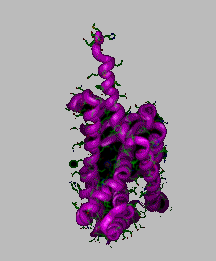
Many Chemistry and Biochemistry majors at the University
of Delaware choose to expand their education by doing
research. Most faculty in the department accept undergraduates
in their laboratories. Many of our students have published
papers or presented talks at scientific meetings on the
results of their work. Up to eight full-time research
scholarships are available for our majors during the summer
preceding their junior year.
For information about the fields of research available,
check the research
page for the department.
General
information about undergraduate research at UD.
|
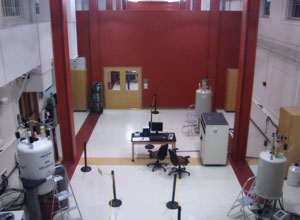
 Undergraduate research is a very important part of our curriculum. Up to thirty full-time research scholarships are available for our majors during the summer preceding their junior year. Ours is the only department that offers a Ph.D. in chemistry that has consistently participated in the annual Intercollegiate Student Chemists Convention, first held in 1936. Unfortunately, records for ISCC awards prior to 1949 have been lost. Since that time, undergraduate students from 62 schools in the Middle Atlantic region have received awards for their research presentations (see following Table). Students from the U of D have received the largest number of awards during that time (91). Significantly, the closest doctoral-awarding school in the list (Temple) has only produced 14 awardees.
Undergraduate research is a very important part of our curriculum. Up to thirty full-time research scholarships are available for our majors during the summer preceding their junior year. Ours is the only department that offers a Ph.D. in chemistry that has consistently participated in the annual Intercollegiate Student Chemists Convention, first held in 1936. Unfortunately, records for ISCC awards prior to 1949 have been lost. Since that time, undergraduate students from 62 schools in the Middle Atlantic region have received awards for their research presentations (see following Table). Students from the U of D have received the largest number of awards during that time (91). Significantly, the closest doctoral-awarding school in the list (Temple) has only produced 14 awardees.
 Kate Scantlebury, the U of D’s Coordinator of Secondary Science Education, is the PI for a $500K NSF grant for the preparation of gender-sensitive secondary science teachers. Professor Harold White is the PI for a $240K NSF grant to develop models for implementing the Problem Based Learning approach, bringing the real world into science classrooms. Professor Susan Groh is also an investigator involved in this study. Most recently, we, together with the U of D’s Department of Biological Sciences, became one of only 10 programs nationwide selected to be participants in the prestigious Beckman Scholars Program, which supports undergraduate research.
Kate Scantlebury, the U of D’s Coordinator of Secondary Science Education, is the PI for a $500K NSF grant for the preparation of gender-sensitive secondary science teachers. Professor Harold White is the PI for a $240K NSF grant to develop models for implementing the Problem Based Learning approach, bringing the real world into science classrooms. Professor Susan Groh is also an investigator involved in this study. Most recently, we, together with the U of D’s Department of Biological Sciences, became one of only 10 programs nationwide selected to be participants in the prestigious Beckman Scholars Program, which supports undergraduate research.  The Chemistry and Biochemistry Department occupies the H. Fletcher Brown, Quaesita Drake, and Lammot Du Pont Chemical Laboratories, the latter having been completed, at a cost of $23M, in 1993. The south wing of Brown Laboratory was completely renovated in 1994-95. These connected laboratory buildings provide over 212,000 sq. ft. of teaching, research and office space and are fully equipped to meet the research needs of students and faculty. They contain a centrally located chemistry stockroom and electronic, machine, and glass-blowing shops that are staffed by full-time specialists. Complete renovation of the north and west wings of Brown Laboratory was completed in 2005-2007.
The Chemistry and Biochemistry Department occupies the H. Fletcher Brown, Quaesita Drake, and Lammot Du Pont Chemical Laboratories, the latter having been completed, at a cost of $23M, in 1993. The south wing of Brown Laboratory was completely renovated in 1994-95. These connected laboratory buildings provide over 212,000 sq. ft. of teaching, research and office space and are fully equipped to meet the research needs of students and faculty. They contain a centrally located chemistry stockroom and electronic, machine, and glass-blowing shops that are staffed by full-time specialists. Complete renovation of the north and west wings of Brown Laboratory was completed in 2005-2007.


